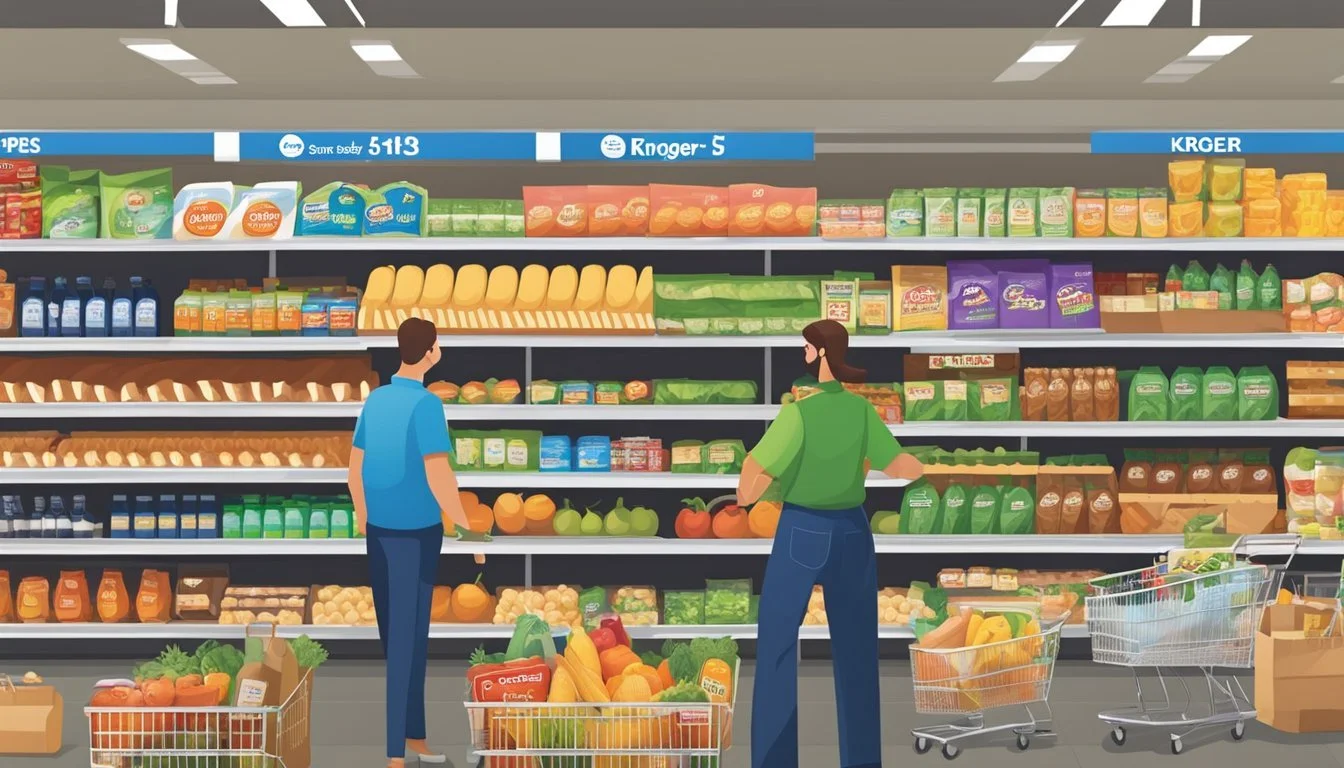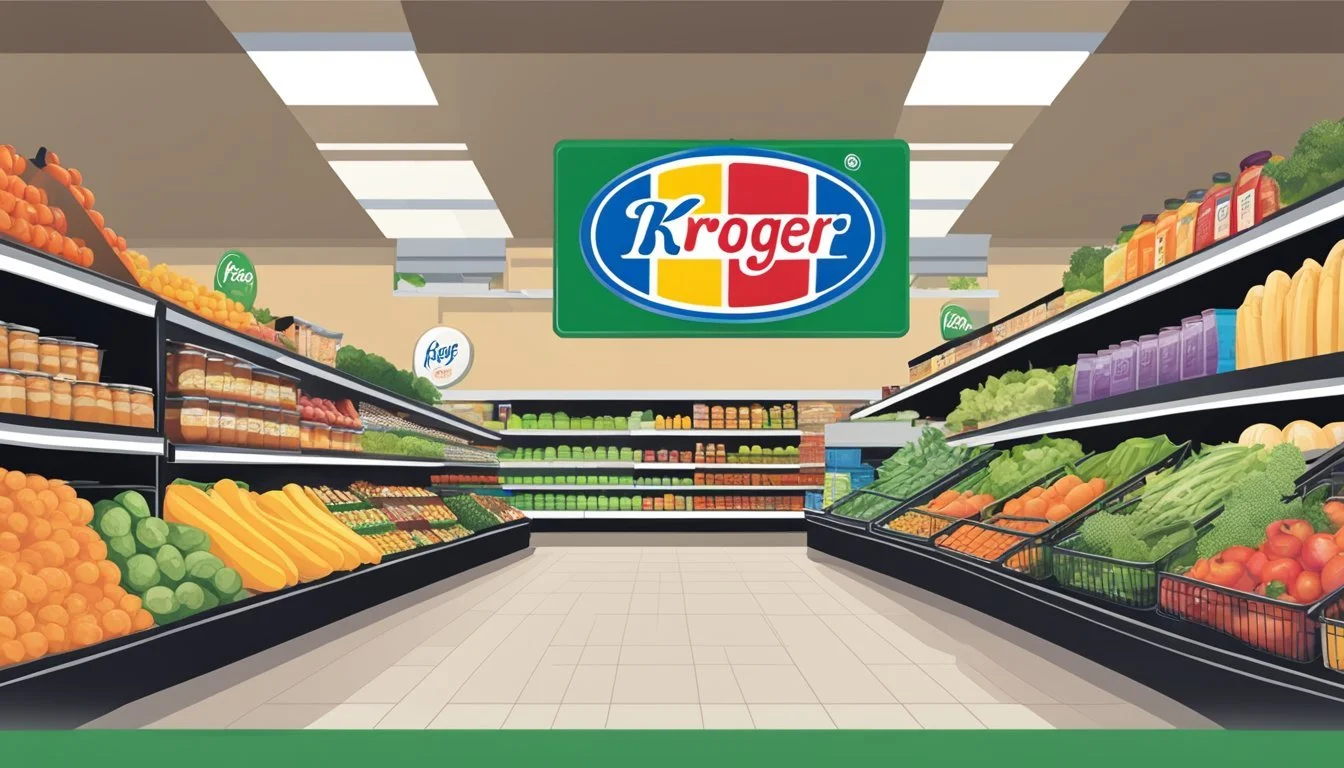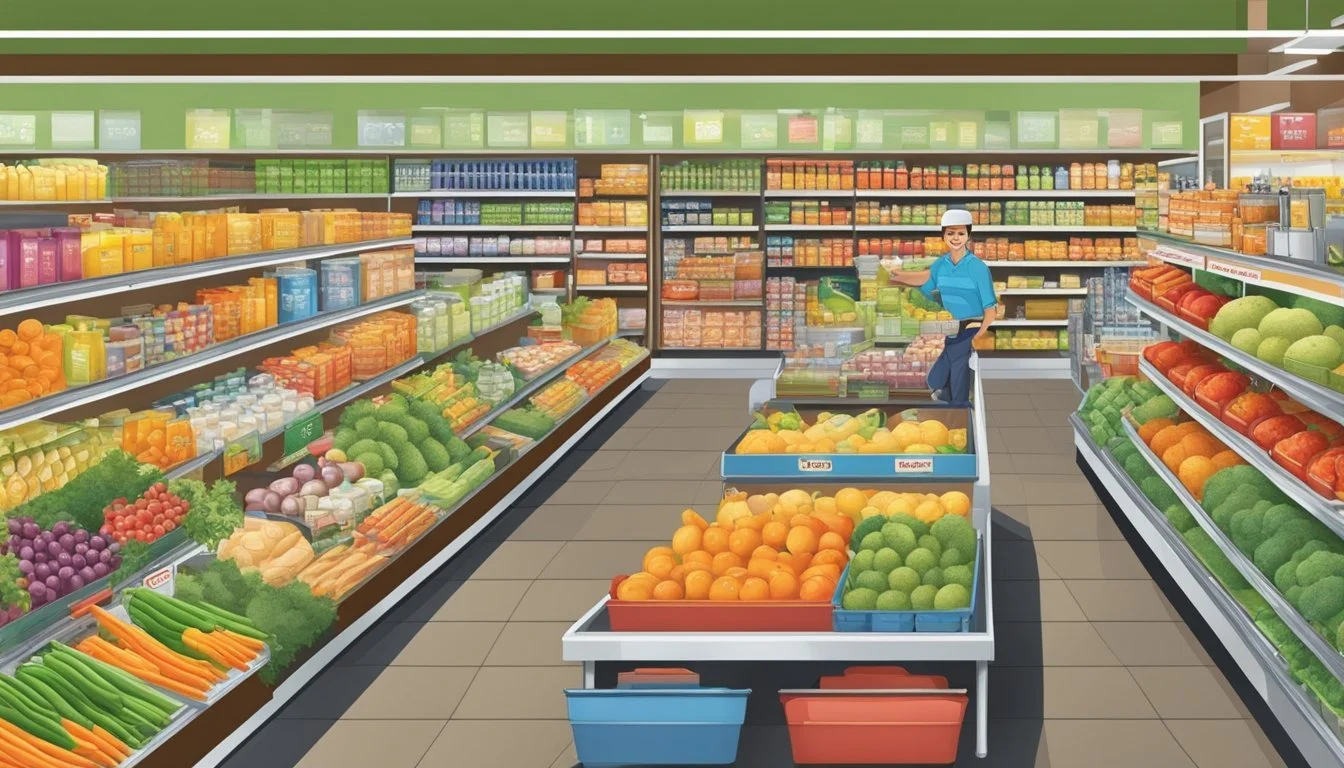Is Kroger Cheaper Than Ralphs?
Comparing Grocery Store Prices
Part of Our Grocery Store Guide with Details on Kroger Prices and Ralphs Prices
In the competitive landscape of grocery retailers, price comparison between giants like Kroger and its counterparts is a critical consideration for budget-conscious consumers. Kroger, the largest supermarket chain in the United States, is renowned for its extensive product variety and commitment to providing cost-effective options for shoppers. With its own line of Kroger Brand products, the retailer asserts its position by offering top-shelf quality at budget-friendly prices.
Ralphs, a subsidiary of Kroger, operates in the same market space, competing with other grocery stores to attract consumers who prioritize savings without compromising on quality. A close examination of their pricing for a selected basket of goods reveals that Ralphs occasionally emerges as the cheaper alternative, albeit by a tight margin. The slight price fluctuations between these stores highlight the importance of ongoing price monitoring to determine which retailer offers the best value at any given time.
Furthermore, as consumer preferences shift towards maximizing value, grocery chains are enhancing their loyalty programs and weekly deals to retain their customer base. While Ralphs and Kroger both strive to offer competitive prices, the deciding factor for shoppers might come down to location convenience, product availability, or the added benefits of loyalty programs. In this context, a comprehensive price comparison takes more than just the price tags into account, weighing the overall shopping experience and benefits.
Comparing Overall Prices
When deciding between Kroger and Ralphs, consumers look for the store offering the best value for their money. This section breaks down the grocery chain prices, the influence of location on costs, and the impact of sales and promotions on the overall shopping experience.
Grocery Chain Overview
Kroger and Ralphs are both reputable supermarket chains in the United States, often providing a wide array of products to consumers looking to fulfill their grocery needs. However, Kroger operates more stores nationally, which may impact pricing strategies. On the other hand, Ralphs is a prominent figure in California's grocery scene, a subsidiary of Kroger itself, potentially offering different price points due to its regional focus.
Price Variation by Location
The location of a store within a state like California can lead to significant price variations. A store in a more affluent area may have higher prices than one in a community with average or below-average income levels. For instance, consumers might find that a gallon of milk at a Ralphs in downtown Los Angeles has a different price than at a Kroger in a less urban part of California, even though both stores belong to the same corporate family.
Example of Price Variation by Location:
Milk:
Ralphs (Los Angeles): $3.19
Kroger (Suburban California): $2.99
Sales and Promotions
Both Kroger and Ralphs offer weekly sales and promotions that can significantly reduce the overall bill for shoppers who take advantage of them. These discounts may not only help consumers save money, but they can also compete with prices found at other low-cost grocery chains like Walmart and Aldi. It's worth noting that sales can vary greatly between the two chains and change on a weekly basis, underscoring the importance of reviewing current deals before shopping.
Example of Sales and Promotions:
Kroger: Buy One Get One Free (BOGO) on select cereal brands
Ralphs: $5 off a total purchase of $50 or more with a digital coupon
Specific Product Comparisons
When comparing Kroger and Ralphs, it is essential to directly examine the prices and selection available in various departments. Shoppers may find that certain products offer better value at one store over the other.
Produce Section
At Ralphs, one can often find competitive pricing on fresh vegetables like tomatoes and cucumbers, often running specials that feature these items at lower prices than Kroger. However, it's not uncommon for Kroger to offer better deals on bulk items like potatoes and carrots, providing a cost-effective option for stocking up on staples.
Meat and Deli
In the meat and deli department, Ralphs generally has a selection of meats including chicken breasts and ground beef at a slight price advantage compared to Kroger. Deli items such as sliced meats and cheeses, however, tend to be similarly priced at both stores, though promotions and sales can alter the usual pricing trends.
Dairy and Eggs
The dairy section at both grocery stores typically offers comparable standard pricing on essential items like milk and eggs. However, Kroger sometimes leads with lower prices on branded items such as cheddar cheese and mayonnaise, making it the cheaper option for these particular dairy products.
Bakery and Dry Goods
For bakery and dry goods, shoppers may notice that Kroger often has better prices on staples like all-purpose flour and brown sugar, as well as bread for daily toast needs. Kroger's store brand, particularly for peanut butter, often undercuts Ralphs’ pricing, offering a more affordable option.
Snacks and Frozen Foods
In the realm of snacks and frozen foods, Ralphs may shine with occasional discounts on hummus and ranch dressing, but Kroger frequently offers a lower base price for frozen vegetables like broccoli and mixed vegetables. With regularly scheduled sales, both stores present opportunities for savings in these categories.
Cost Saving Strategies
When shopping at grocery stores like Kroger and Ralphs, customers can employ various strategies to stretch their grocery budget further and save money. These strategies allow for significant savings without compromising on the quality of food, especially for a family of 4.
Discounts and Coupons
Shoppers should always look out for discounts and sales offered by Kroger and Ralphs. Signing up for loyalty programs and subscribing to email lists can provide access to exclusive coupon deals. Often, these grocery stores offer digital coupons that can be conveniently accessed through their apps or websites, leading to direct savings at checkout.
Example: Ralphs may offer weekly deals on fresh produce, which can be combined with manufacturers' coupons for additional savings.
Buying Generic Store Brands
Both Kroger and Ralphs offer their own generic store brand options, which are usually priced lower than national brands. These store brands include a wide variety of items, from healthy options to pantry staples, and are a cost-effective alternative for those looking to save money.
Kroger: "Smart Way" is their budget-priced private label that includes around 150 products.
Ralphs: Known for lower prices on its store brand compared to Albertsons, across most categories such as beverages and frozen foods.
Meal Planning and Bulk Purchases
Planning meals in advance can help shoppers avoid buying items they do not need and focus on purchasing in bulk which often costs less. Having a meal plan helps in buying only the required items for the planned meals, thereby reducing waste and saving money. Additionally, some items are sold in larger quantities at a discount, which can be beneficial for a family of 4 looking to stay within a grocery budget.
Bulk Buying Example: Purchasing larger bags of rice or beans can be cheaper per unit and supports a cheap food strategy while still being healthy.
Evaluating Grocery Quality and Selection
When assessing grocery stores like Kroger and Ralphs, customers often consider two crucial aspects: the quality of products and the breadth of selection available to them.
Product Freshness and Quality
Kroger is renowned for offering a satisfactory level of freshness in its produce section. Shoppers typically find a wide range of fruits and vegetables that are refreshed regularly to maintain quality. In the deli/meats area, Kroger tends to ensure that a variety of meats and deli items are available, focusing on both freshness and quality, which is an important aspect of their customer offering.
Ralphs also places a high emphasis on product quality, especially in their produce section. They are known to source a variety of fresh and organic produce, aligning with consumers' expectations for high-quality fruits and vegetables. Additionally, Ralphs is recognized for its quality meat selection, with an array of premium cuts that attract quality-focused shoppers.
Variety and Availability
In terms of variety, Kroger boasts a wide selection within its grocery store aisles, meeting the needs of diverse consumer preferences with both name-brand and store-brand products. The store is structured to provide a plethora of options across all categories, ensuring shoppers can find almost everything on their list in one trip.
Conversely, Ralphs generally provides a similar level of selection, often characterized by an extensive array of organic and natural products. They cater well to shoppers who prioritize these options, and their shelves are typically stocked with a range of specialty goods that appeal to a more health-conscious demographic.
Both stores display robust efforts to balance quality and variety, each targeting a somewhat different customer base while striving to uphold standards that shoppers expect from major grocery chains.
Practical Shopping Tips
When grocery shopping at Kroger or Ralphs, shoppers can maximize their savings by strategically creating grocery lists, understanding sales cycles, and utilizing loyalty programs. Implementing these methods can lead to significant reductions in their grocery budget.
Creating an Effective Grocery List
A well-thought-out grocery list ensures shoppers buy only what they need, reducing impulse purchases and waste. Shoppers should start by crafting a meal plan for the week, then listing ingredients needed for those meals. Highlighting sales items on the list can lead to savings, especially when they align with the meal plan.
Meal Plan: Consider weekly sales when planning meals.
List Prioritization: Bold essential items to avoid overspending.
Understanding Sale Cycles
Kroger and Ralphs often have sales cycles, typically running on a six to eight-week rotation. Shoppers who track these cycles can anticipate when items will go on sale, allowing them to stock up at a lower price, contributing to long-term savings.
Track Sales History: Note previous sales to predict future ones.
Bulk Purchases: Buy non-perishables in bulk during sale periods.
Leveraging Loyalty Programs
Both Kroger and Ralphs offer store loyalty programs that reward shoppers with points that can be exchanged for discounts on groceries. At Kroger, for example, every 1,000 rewards points equals $5 in savings. Shoppers earn more points per dollar by purchasing store brand items.
Sign Up: Enroll in the loyalty program to start earning points.
Maximize Points: Buy store brands for higher point earnings.
Nutrition and Health Considerations
When comparing Kroger and Ralphs, consumers not only consider the price but also how their selections impact nutrition and health. Both stores offer options that cater to a balanced diet and specialized health needs, reflecting their commitment to accommodating diverse dietary preferences and lifestyles.
Balancing Budget and Nutrition
For those aiming to maintain a healthy diet while managing their finances, Kroger offers a variety of nutritious yet affordable products. One can find organic arugula in large containers, suitable for salads and other dishes, and at a price point that allows for consumption in greater volumes without a substantial increase in the grocery bill. Kroger also offers their own brand of navel oranges, highlighting their effort to provide cost-effective, health-promoting options.
Kroger's affordable nutritious products:
Organic greens like arugula
Store brand fruits such as navel oranges
Furthermore, Ralphs, often sharing its parent company Kroger's product line, tends to feature similar items. The challenge for the consumer lies in differentiating the stores based on particular deals, discounts, and location-specific offerings which may influence the total cost of health-focused grocery lists.
Special Dietary Needs and Organic Options
Both Kroger and Ralphs cater to special dietary needs by offering a range of organic and health-conscious products. Kroger's selection, for example, includes wild Alaska sockeye salmon, a fish renowned for its high omega-3 content and vitamin D levels, beneficial for heart and brain health. Moreover, stores like Kroger provide options like Bob's Red Mill Nutritional Yeast—an excellent supplement for those following vegetarian or vegan diets due to its protein content and cheesy flavor.
Special dietary products available at Kroger:
High omega-3 fish like wild Alaska sockeye salmon
Nutritional supplements such as Bob's Red Mill Nutritional Yeast
Ralphs similarly positions itself to address the health and nutrition needs of its consumers with a potential overlap in organic offerings, each store's competitive pricing, and product availability affect consumers' decisions on where to shop for their health-related groceries.
Lifestyle and Convenience Factors
When selecting a grocery store, lifestyle and convenience factors can significantly impact the shopping experience, especially for those planning meals for a family of four. Whether it's for lunch or dinner, considerations include time savings and how well the store caters to the preparation and size of family meals.
Time-Saving Shopping and Preparation
Shoppers at Kroger and Ralphs are often looking for ways to make grocery shopping and meal preparation more efficient. Kroger tends to offer a wide variety of ready-to-eat options that can save time, particularly when preparing lunches for a family of four. These options may include leftover chicken, homemade hummus, or hard-boiled eggs that are ideal for quick meals. In contrast, Ralphs may provide a different selection of products aimed at convenience, like pre-packaged tortillas, facilitating faster dinner preparations without compromising on taste.
Meal Servings and Family Size
When planning meals for a family of four, both quantity and quality become critical considerations. Where Kroger might offer bulk items or multi-buy deals suitable for preparing several dinners, Ralphs may focus on offering smaller, high-quality items that cater to individual preferences for a single meal. A family might find more value in Kroger's approach if they are looking to prepare meals that ensure leftovers, like roasted chicken (What wine goes well with roasted chicken?) that can be used in various dishes the following day. Ralphs, on the other hand, may be a better choice for families preferring to shop for fresher ingredients more frequently and in precise amounts needed to avoid excess.
Conclusion
In comparing Kroger and Ralphs for grocery savings, several factors come into play. One must consider not only the price but also the quality and selection of products available. Data indicates that Kroger, being the largest supermarket chain in the U.S., can provide substantial value, offering a wide range of products alongside competitive pricing.
Ralphs has shown in specific instances to have slightly lower prices than Kroger. This indicates that Ralphs can be a suitable option for consumers looking to tighten their grocery budget. However, individual experiences may vary based on location, shopping habits, and product preferences.
In terms of savings, both Kroger and Ralphs offer weekly deals and loyalty programs that can contribute to overall cost efficiency. As for quality, both chains have similar standards, providing a good selection of branded and store-brand products.
Shoppers interested in a diverse selection might find Kroger's extensive inventory appealing, while those prioritizing immediate budget concerns might align with Ralphs' cost-effectiveness. Consumers are advised to consider their specific needs and take advantage of sale cycles, store-brand products, and rewards programs offered by both chains to maximize their spending power.
In essence, both Kroger and Ralphs have attributes that can support a budget-conscious consumer, with the final decision likely being influenced by personal preference, geographical accessibility, and the weight given to price versus selection and quality.








